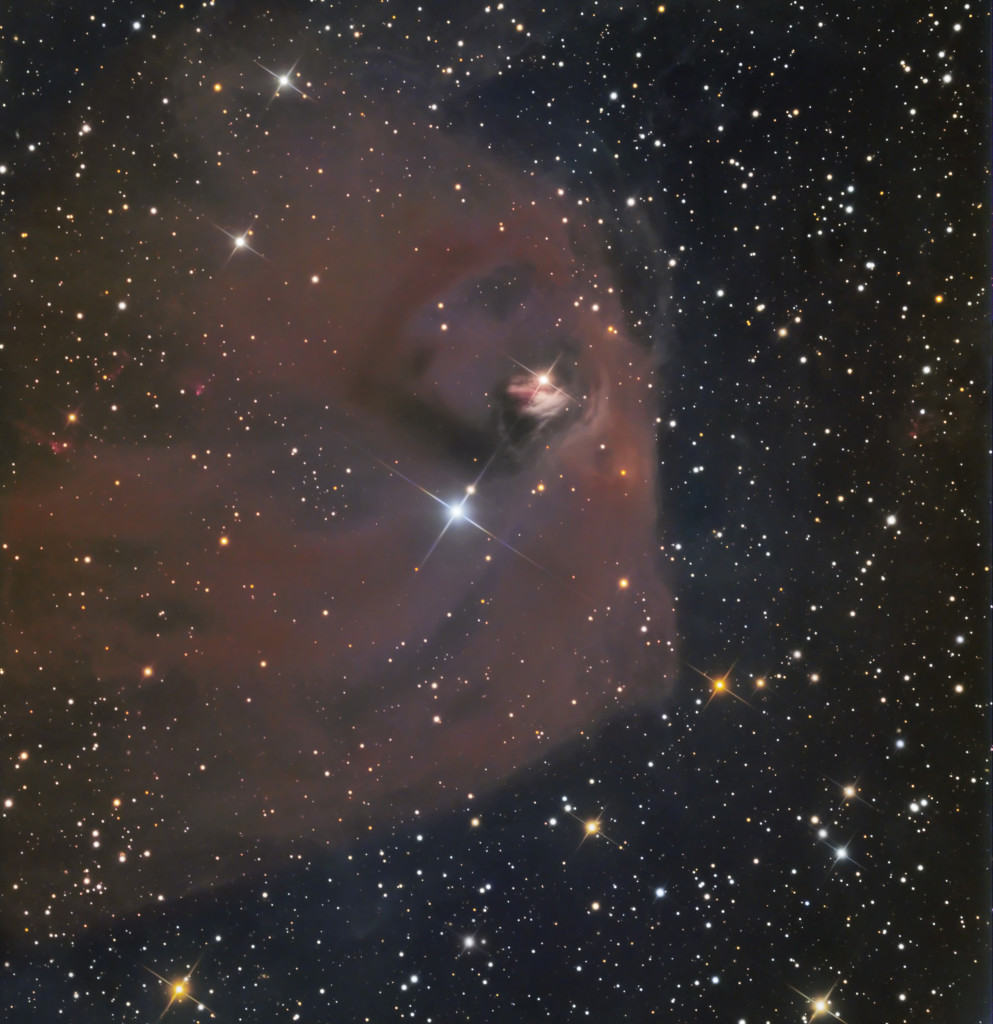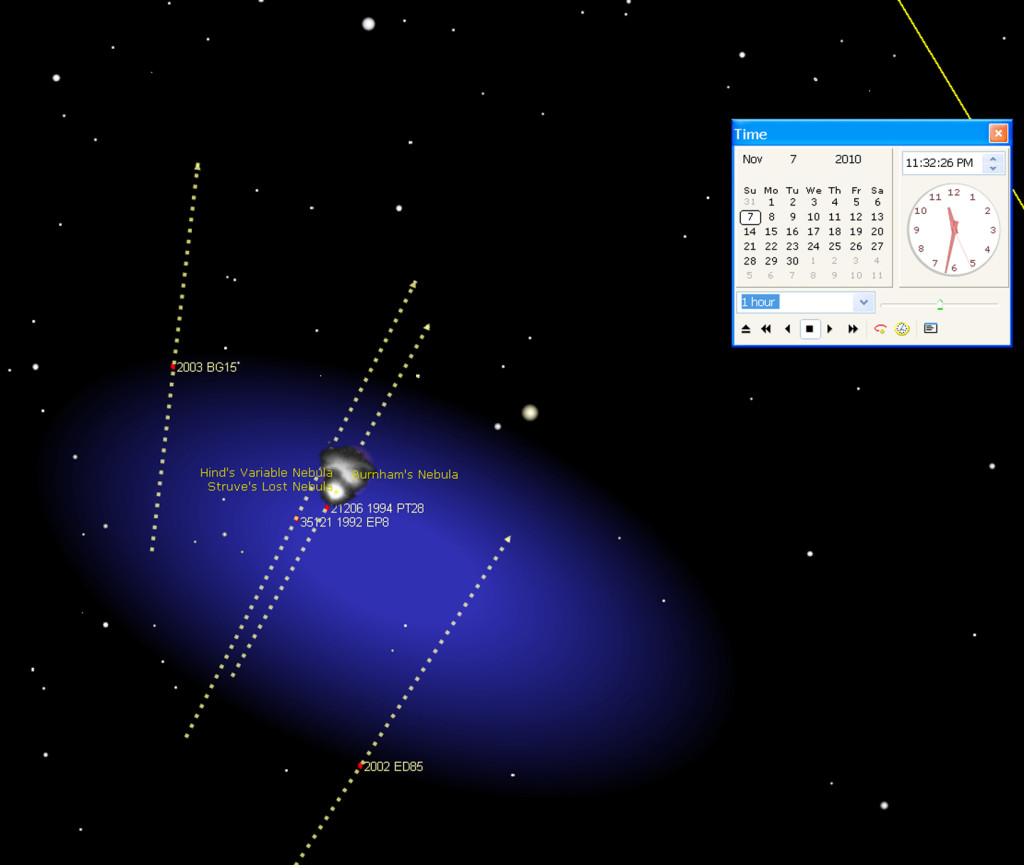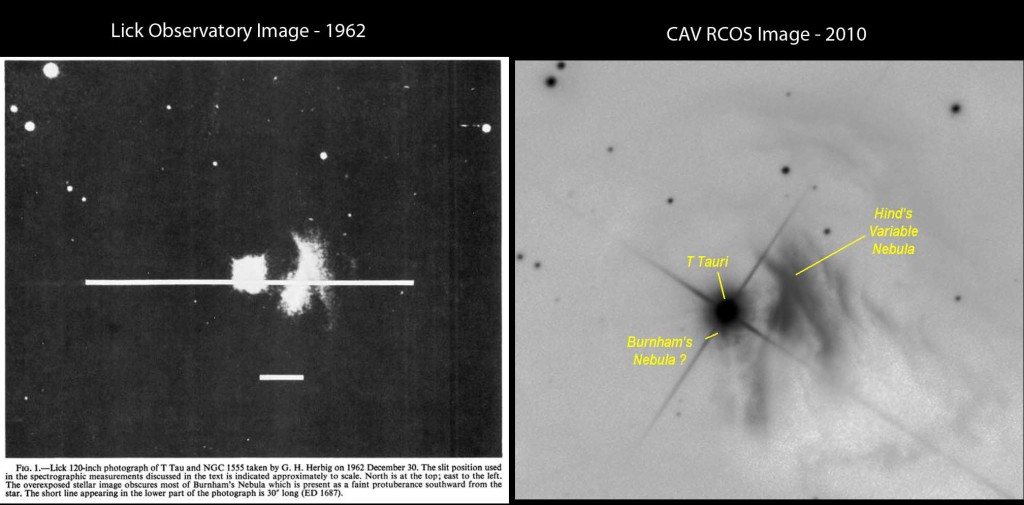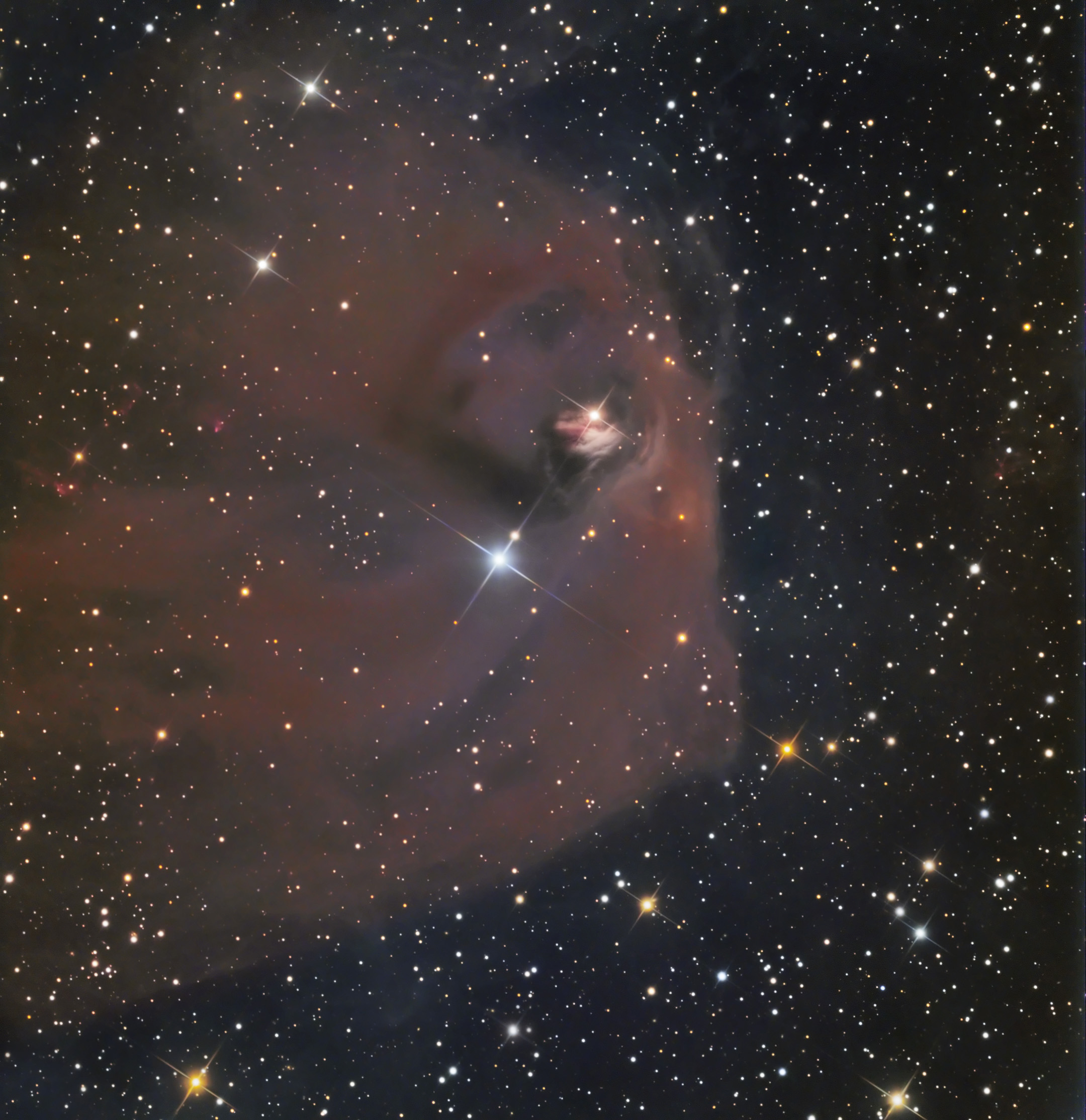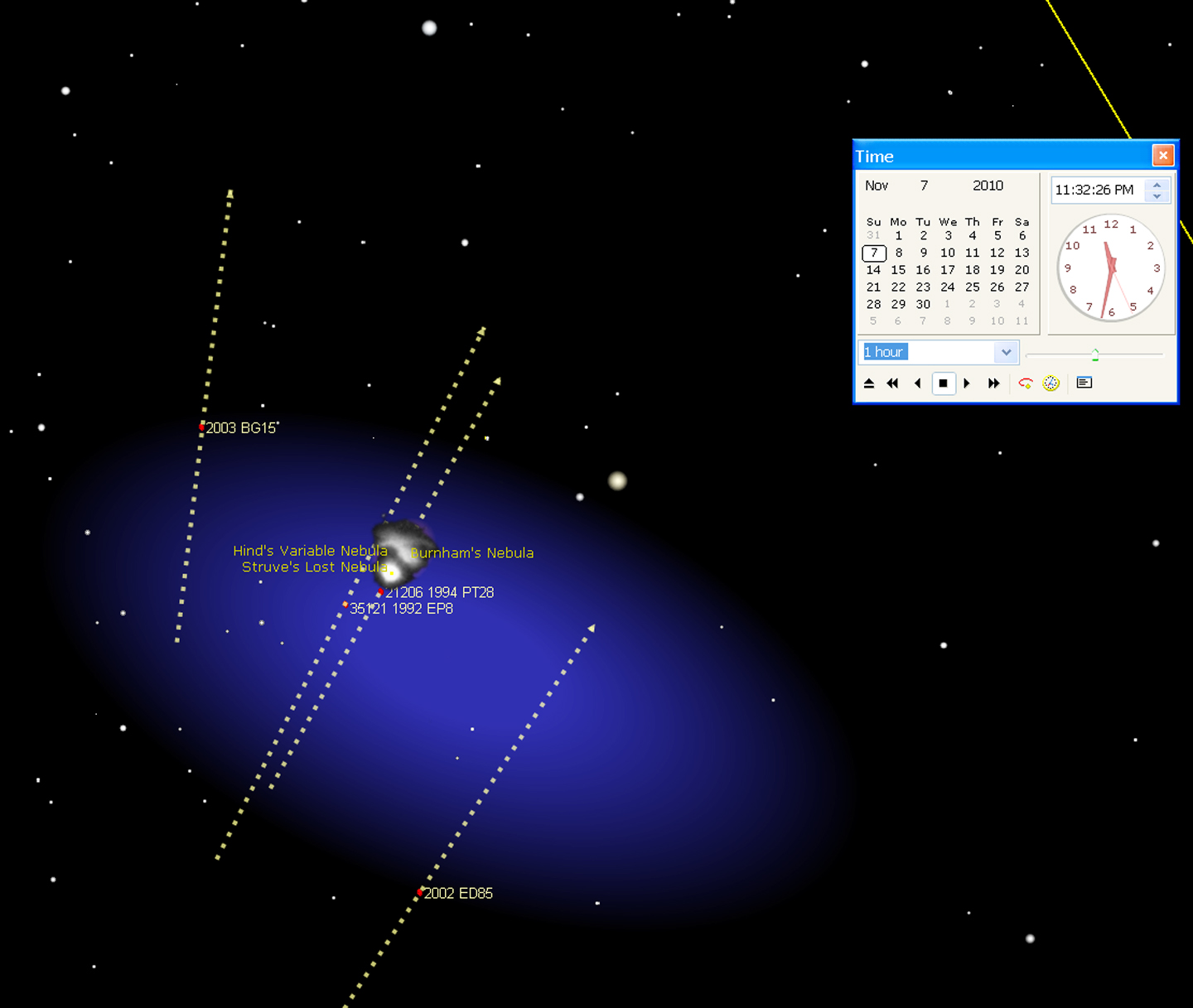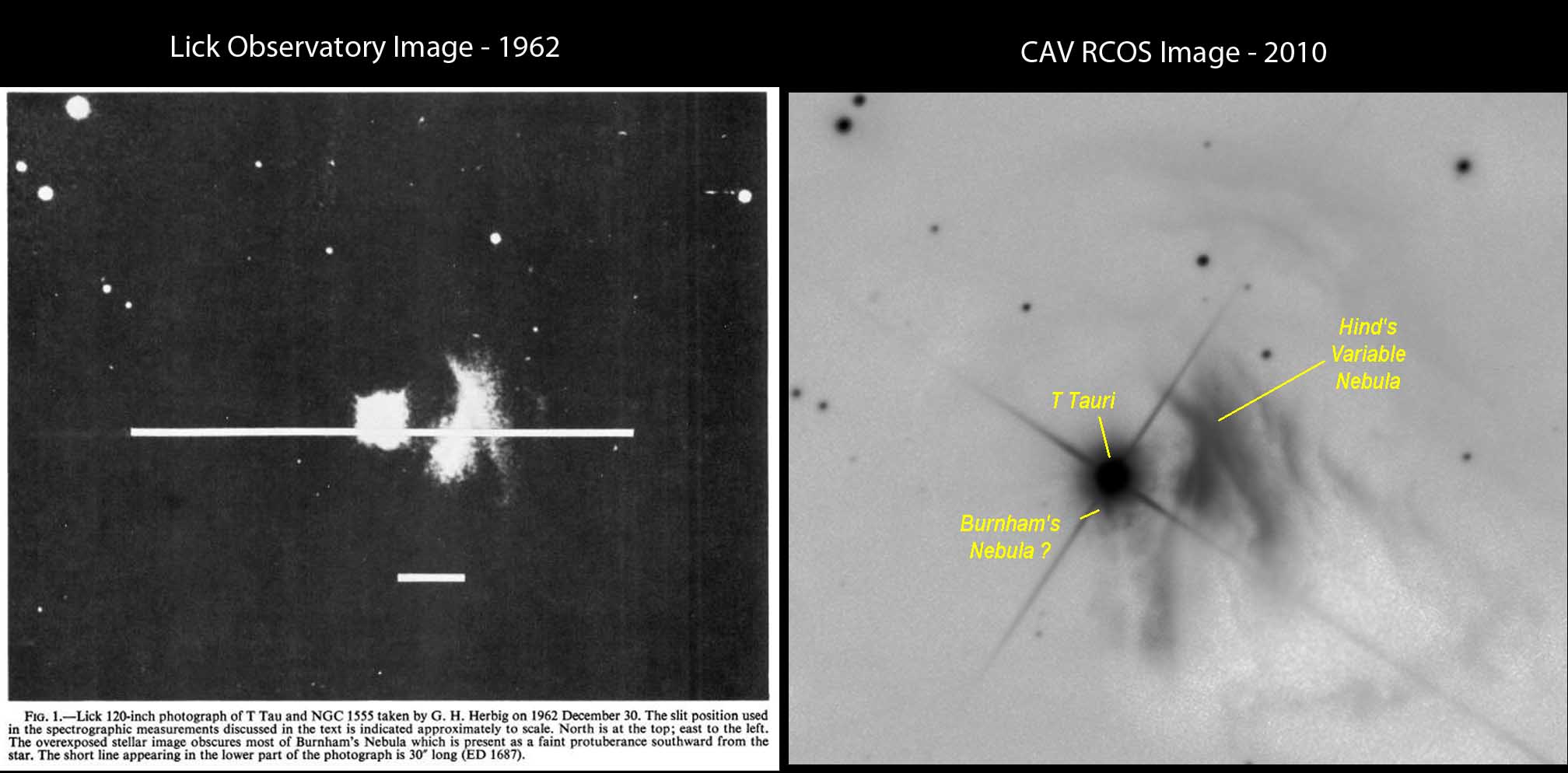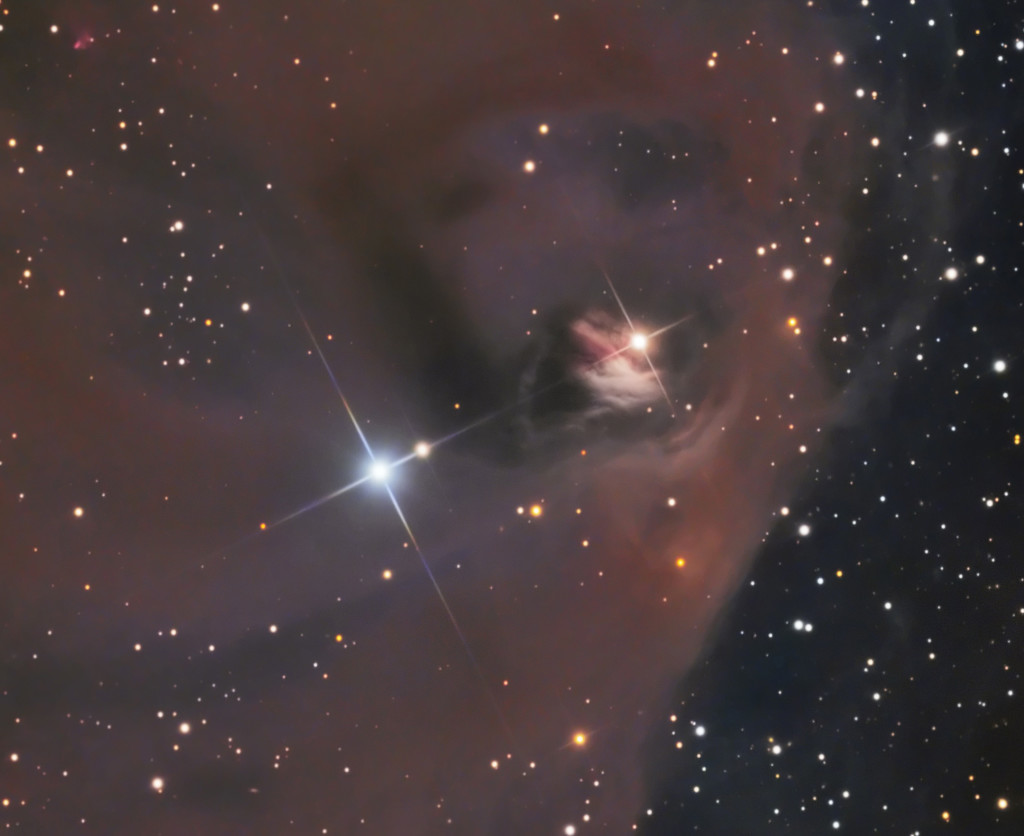
I was originally inspired by Don Goldman’s gorgeous image of this area to see what I could ferret out after he nailed it! My first several 40-minute subframe images showed two asteroids directly piercing through the reflection nebula NGC1555. This is not surprising since Hind’s Variable Nebula (NGC1555) is less than 2 degrees off the ecliptic. Don Goldman also had an incidental asteroid cross his image (see link below) I identified these asteroids in my image as minor planets “1992 EP8” and “1994 PT28” using the Harvard Minor Planet Checker database (image above shows these asteroids both being fainter than 18th magnitude). Other asteroids are also seen in this high asteroid traffic region.
I also created a 35 hour LRGB image taken over several months in late 2010. It consists of 10.6 hours of luminance data 1X1 @-30C using the Apogee U16M camera on the 14.5-inch RCOS scope. The RGB data totaling 24.6 hours was also collected 1X1 @-30C with the same camera. Some of the data was retrieved while at CAV safaris in November and December 2010 but most was gathered remotely controlling the scope from Boca Raton via the internet. You will not see the asteroids in the 35-hour LRGB assembly image because a program called sigma reject was used to process the combined images which removes asteroids and the like. If I hadn’t used sigma reject, they would remain but probably be too faint compared to the nebula to be worthwhile trying to preserve. Star T-Tauri varies its brightness from between 9.3 to 14 but I don’t not know its periodicity. In my image, the star appears about magnitude 9.5 when compared to the nearby (non-variable) star SAO 93887 which is magnitude 8.3. This has been a good time to image the reflection nebula NGC1555 since T-Tauri is near its maximum brightness. I also attached a re-oriented image of the region so as to directly compare my cropped image (second image) to a recent fabulous (March 26, 2011 APOD) image taken by Adam Block with the Mt. Lemmon 32-inch RCOS in Arizona (link below).
An inverted extreme close-up image mosaic shows what may be Burnham’s Nebula extending as a protuberance below T-Tauri in my data. Spectroscopy of Burnham’s Nebula (Lick Observatory, 1962) suggests it is not reflection nebulosity (like Hind’s/NGC1555) but rather Herbig-Haro protostar remnants, perhaps akin to remnant stellar “placental products” still associated with the recently born star T-Tauri! Close inspection of the color LRGB image also shows faint outlying red Herbig-Haro objects identifying this whole area as a dusty star nursery. Despite all this dust, numerous faint galaxies feebly shine through the dust cloak.
http://articles.adsabs.harvard.edu//full/1975ApJ…195..631S/0000633.000.html – Landmark article – Lick Observatory 1962
http://apod.nasa.gov/apod/ap110326.html – Adam Block violates Hind’s – MARCH 26, 2011 APOD – Mt. Lemmon, Arizona
http://dg-imaging.astrodon.com/gallery/display.cfm?imgID=109 – Check out Don’s Asteroid Movie!!!!!!
http://www.tvdavisastropics.com/astroimages-1_00006f.htm – Tom Davis widefield masterpiece includes Hind’s!
http://www.skyimager.net/astro/nebulae/NGC1555-LRGB-200902.html — Arizona Sky Village great image!
http://www.aavso.org/vsots_ttau — Fantastic article on Hind’s, Burnham’s and T-Tauri stars!!!
